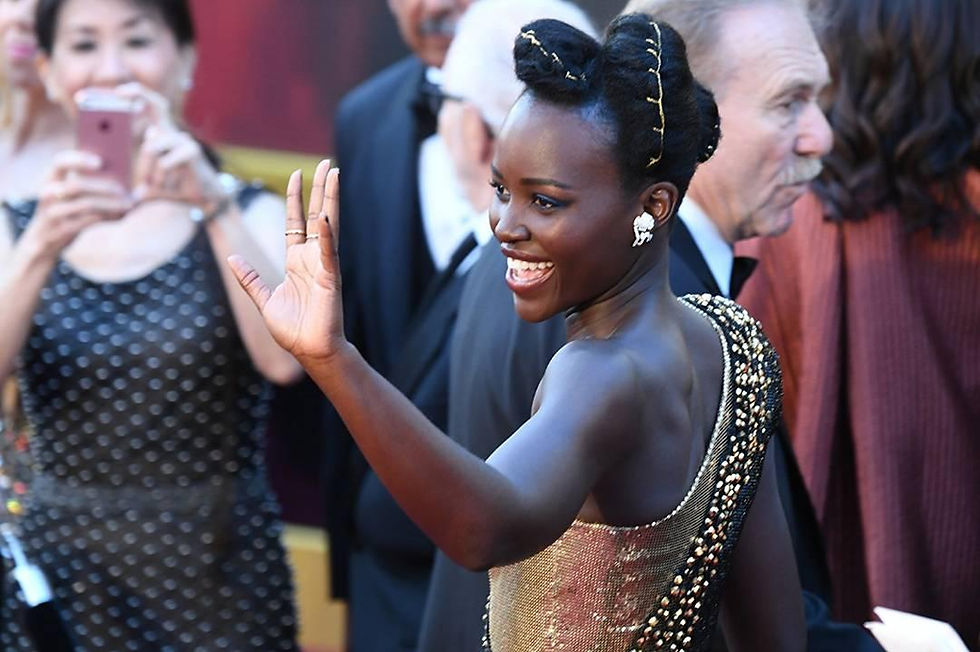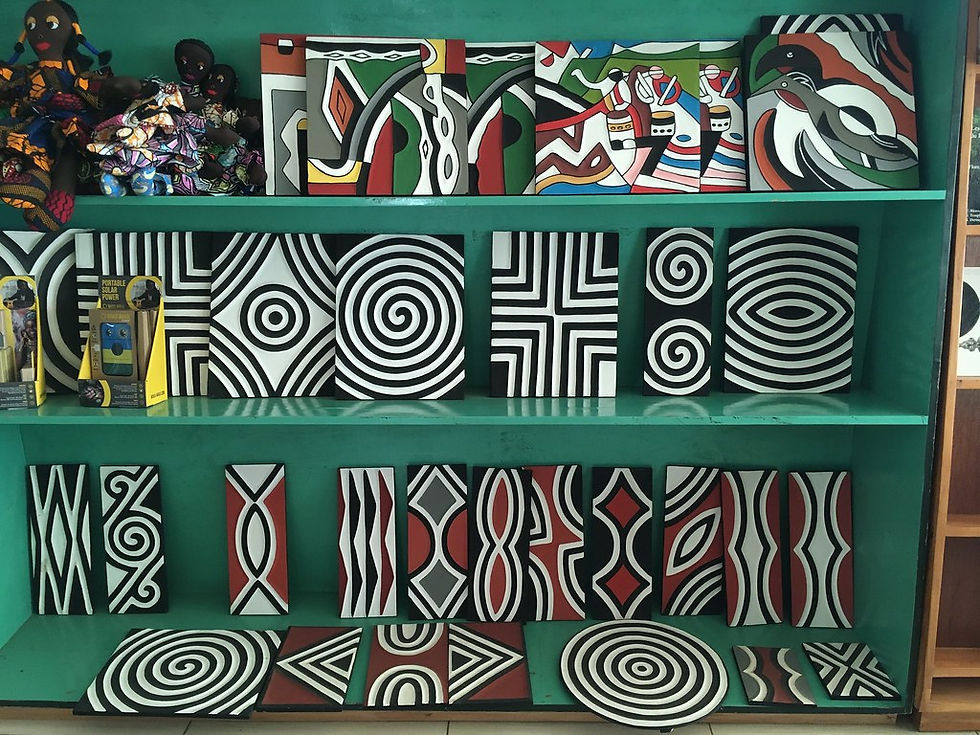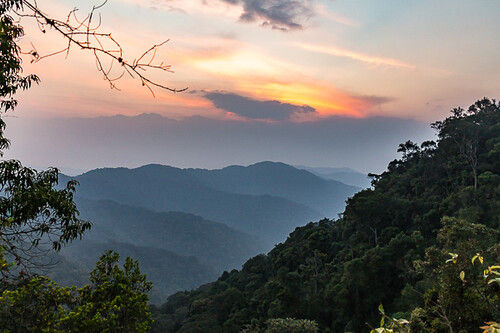Travel Tips to Rwanda
- Dr Suresh K R Kumar

- Jul 31, 2022
- 11 min read
Updated: Aug 14, 2024
“God spends the day elsewhere, but He sleeps in Rwanda”, is an old saying in Rwanda.
This quote explains the beautiful land that Rwanda is. The country is so beautiful that God himself spends the night there and makes it His home. Rwanda is one of the most picturesque countries in the world and there are many interesting facts and travel tips about Rwanda which are less known.

The country lies just south of the equator in central Africa and is blessed with rich biodiversity and an extraordinary range of wildlife and scenic beauty. This is the place where the Great Lakes Region and East Africa converge. Rwanda is also known as the land of a thousand lakes. Beautiful and scenic lakes, both big and small dot this small country.
The Republic of Rwanda is a landlocked country located on the Great Rift Valley. Its neighbors are Tanzania, Uganda, Burundi and the Democratic Republic of Congo. The capital of the country is Kigali, one of the safest and friendliest capitals in the world. With a total area of 26,338 square kilometers, it is the fourth smallest country in Africa.
Most of the country is situated on high altitude and the lowest point is Rusizi River at 950 meters above sea level. The highest point is Mount Karisimbi at 4,507 meters above sea level. Because of the high altitude the climate is pleasant, with the mountainous west and north cooler than the rest of the country.
Though a French colony, English is popular and widely spoken, especially in Kigali. Kinyarwanda, English and French are the official languages.
With a population of about 12.6 million people in a 26,338 sq km of land, Rwanda is one of the densely populated countries. Rwandans are from one cultural and linguistic group called the Banyarwanda. This group is divided into three sub-groups: the Hutu, Tutsi and Twa.
Rwanda Genocide
The country went through a traumatic event in 1994 when the Rwandan genocide happened. This was when Hutu extremists killed Tutsi people and many moderate Hutu people. It is estimated that over one million people died in the civil war. Following the outbreak of the civil war, Rwandan Patriotic Front was formed led by Paul Kagame. Eventually, the Rwandan Patriotic front defeated the rebeIs and restored peace in the country. The event is the darkest period in the history of Rwanda.
However, today most Rwandans prefer to forget this traumatic event and are entirely focused on building the nation. Rwanda today is a peaceful and safe place. In fact, it can as well claim as the safest country in Africa. Majority of the Hutu and Tutsi live peacefully and work towards the development of Rwanda.

The Rwandan Government, in the recent times have taken several initiatives to develop the country as an economic and technology powerhouse in eastern Africa. Besides, it is an investor friendly country and has extremely low levels of corruption compared with neighboring countries. Rwanda is also one of the three countries in the world where women are in a majority amongst the parliament members. This is a clear testimony of the gender equality in the country.
The culture of this beautiful country is a blend of both the tribes interspersed with the influence of many other ethnic groups who have made Rwanda their home.
Here are some amazing facts about Rwanda.
Travel Trip # 1: Amasunzu
We are familiar with the various hairstyles, crew cut, buzz cut, Afro, dreadlocks, Caesar cut, etc. Have you heard of Amasunzu?
This is a unique Rwandan hairstyle which was once extremely popular amongst men and women. Worn in different styles, Amasunzu hairstyle involves cutting the hair at sides. It is then allowed to grow towards the middle. The hairstyle is a matter of pride for most Rwandans. Many young people are keen on reviving the tradition and keeping the Amasunzu hairstyle.
Men wore it as a symbol of bravery and as a macho emblem. Whereas unmarried women often wore to signify that they are ready for courtship. Once married they grew the hair showing respect for her husband and his family.
In the recent times the Hollywood actress Lupita Nyong’O wore it at the 90th Academy Award signifying her connection with the eastern Africa. The Arsenal team who visited Rwanda in 2020 went over to Rwanda’s Aamsunzu Barbershop and experienced first-hand the hairstyle.

Travel Tip to Rwanda # 2: Intore Dance
Intore, in Kinyarwanda language, means ‘The Chosen Ones’. The artistes performing this centuries old dance are specially chosen. They are given specialized military training and taught the technique of jumping. Incidentally, jumping forms a significant part of this beautiful dance.
During this dance, the artistes wear grass wigs and hold weapons, generally spears in their hand. Because of it martial origins Intore dance is very popular and has a plenty of symbolic representations to army. For instance, the infantry is symbolized by a mane of a lion, which are the sisal wigs worn by the dancers. The air force is represented by a symbolic posture of an eagle. This style is called ‘Agasiga’ or eagle. The dancer, elegantly spreads the hands like an eagle and turns the head like an eagle, surveying the landscape.

"Rwanda IntoreDancers.jpg" by configmanager from Greenbelt, MD is licensed under CC BY 2.0
Live performance of this dances are usually held in most hotels and lodes, especially in the evening before dinner to entertain their guests as part of cultural tourism. The Gorilla Guardians village in Musanze, one of the largest cities in Rwanda and the National Museum of Rwanda in Kigali have regular performance of Intore dance.
Travel Tip # 3 Imigongo Art
Cow is an animal that has close association with the human history. It is revered, valued and is an important source of food – both as milk and meat. Cow dung forms an essential part of many societies and is used as a fertilizer, fuel, repel mosquitoes, thermal insulators, etc.
Imigongo art of Rwanda is an immensely popular art form practiced by the women. Cow dung is extensively used in the art and themes are generally geometrical designs with dominant colors of red, black, and white. Cow dung is mixed with ash and is poured into wooden boards in a complex geometric pattern. After it is dry the patterns are painted using natural pigments. The white is produced using the clay mineral kaolin; red from the iron rich soil; yellow from ochre and black from banana peel ashes, aloe vera sap.
Imigongo art was created and perfected by Prince Kakira, in the late 18th century. Prince Kakira was the son of King Kimenyi of Gisaka in the eastern Kibbungo region bordering Tanzania. He invented this art form essentially to decorate the plain walls of his home. The local women soon picked up new fascinating way of making their huts more colorful and became popular throughout Rwanda.
Though today the number of huts adorned with Imgigongo art is reducing, it is still a popular artwork and the process of making it has not changed since its invention. However, during the period following the civil war this art declined. Because the people were still scarred and disturbed from the incident and not much attention was paid to art and culture.
Luckily, some of the women’s cooperatives managed to revive this art and today it is found in most parts of the country. The modern artistes have reformed the art and blended the traditional methods with the modern to create brilliant patterns that convey the new spirit of Rwanda.
Though the Imigongo art was an essentially women’s creative efforts, in recent times several men are also involved in this. Kigali is dotted with shops – both formal and informal- which sell Imigongo paintings. But the cooperative near the town of Nyakarammbi about three hours from Kigali is the best-known cooperative for Imigongo art. Another popular place is Kakira Imigongo established by the genocide widows and has since produced some of the best Imigongo art forms in Rwanda.

"Imigongo Paintings" by Rachel Strohm is licensed under CC BY-ND 2.0.
Travel Trip # 4 Umuganda
If you visit Rwanda, especially Kigali, on the last Saturday of the month, you will find the city quiet. Most of the shops are closed, there is no traffic on the road, no public transport and virtually no commercial activity. However, you will find the entire town is engaged in cleaning up the neighborhood, planting trees, and contributing to the completion of various public projects.
This is Umuganda meaning “coming together to achieve a goal”. It is a national holiday on the last Saturday of every month when public service is compulsory for all the citizens from 8am to 11 am. Visitors and guests are encouraged to participate. The program started in 2009 and is strictly implemented under the supervision of the police. Needless to say, it had a big impact on the cleanliness of the country.
It is no surprise that Kigali is not only a beautiful city but also one of the cleanest cities in the African continent. In 2008, UN Habitat declared Kigali as one of Africa’s cleanest cities. Moreover, Rwanda was one of earliest countries to ban single use plastic bags. The ban was the result of a study by the Ministry of Environment who found that plastic bags posed a threat to agriculture and contaminated the land and the lakes. The Rwandan population today uses several biodegradable alternatives to single use plastic bags.
The country had set itself an ambitious target of increasing forest cover to 30 percent of total land area by 2020. It is reported that 29.8 percent of Rwanda is covered with forest. This is in addition to measures like aggro-forestry and training schemes in forest management.

by DFID - UK Department for International Development is licensed under CC BY-SA 2.0
Travel Trip # 5 Kibeho Parish
Did you know that Rwanda has its own Lourdes?
On 28 November 1981, Alphonsine a 16-year schoolgirl studying at the Catholic school in Kibeho heard a strange voice. When she looked up, she saw a veiled woman, incredibly beautiful, who spoke to her in a soft and soothing voice. “I am the Mother of the Word’, she told Alphonsine. The young girl quickly realized that it was the Blessed Virgin Mary.
Alphonsine had this vision a few more times. She reported this to the school and the community leaders. It was the time when Rwanda was facing an increasing tension between the Tutsi and Hutu groups. In view of this social tension, no one was willing to believe her. Hence, most of them dismissed it as an attention-grabbing act by the young girl.
But within months two other girls, Nathalie and Marie Claire also had a similar vision of the Blessed Virgin Mary. The Mother told the young girls about a time in future when the whole Rwanda would be in a turmoil, with rivers flowing with blood and streets littered with bodies. While no one paid much attention to the prophecies, people started believing in the visions of the three young girls. The visions stopped after a few months.
The prophecy of course was proved right when the Rwanda genocide happened in 1994. Kibeho, where the visions occurred, itself was a place of massacre where hundred of people were killed. Unfortunately, one of the girls, Marie Claire and her husband were also killed in the civil war.
The parish became a place of worship for thousands of devout Catholics and soon it became the shrine of Our Lady of Kibeho or Our Lady of Sorrows. After a 20-year investigation into the visions of the three girls, Vatican in 2001 certified them as authentic. Incidentally, Kibeho is the only Vatican approved apparition in Africa.
Every year Kibeho celebrates the feast day of Our Lady of Kibeho on the 28thNovember, the anniversary date on the first vision appeared. Kibeho is easily accessible by road and is about 162 kilometers from Kigali. Visitors from all over the world visit Kibeho seeking blessings of the Lady. It is estimated that over 30,000 visitors are received during the peak season. Kibeho Parish remains as one of the most important Roman Catholic shrines in Africa.

"Opening of the Center for Blind Children in Kibeho" by Ministry of Foreign Affairs of the Republic of Pol is licensed under CC BY-ND 2.0.
Travel Tip # 6 Nyungwe National Park
Nyungwe national park is one of the few parks in the world where chimpanzees can be tracked. It is also one of the biggest national parks of Rwanda and extremely popular with tourists. The park is on the southwest of Rwanda towards the border with Burundi and west of the Democratic Republic of Congo. The Park stretches from Lake Albert to Lake Tanganyika on the Albertine rift in the Great Rift Valley.

"Sunset over Nyungwe National Park, Rwanda" by travelmag.com is licensed under CC BY 2.0.
Established in 2004, the park boasts of about 1.068 plant species including 248 species of Orchids. Besides this, about 85 mammal and over 322 bird species are found in Nyungwe rain forests. The bird species include Red-collared Babbler and 29 other Albertine Rift Endemic species and over 120 species of butterflies, making it the best site for bird watching.
The park is famous for its chimpanzee trekking and has over 13 primate species, which is almost 25% of the total primates in Africa. There are over 500 chimpanzees, and the trekking starts mainly from three centers, Kitabi, Uwinka and Gisakura. The trekking is highly regulated, and the tourists get only one hour with the chimpanzees.

Nyungwe National Park also offers the unique canopy walk. Here, the visitors get an opportunity to walk over the suspended bridge and enjoy the spectacular view of the rain forests below.
Travel Tip # 7 Volcanoes National Park
This park is named after the chain of eight dormant volcanoes in the north-western Rwanda. The large 160 square kilometers of rain forests holds five of the eight volcanoes in the Virunga Mountains. It is home to the mountain gorilla and was first gazetted in 1925. This is one of the few places in the world where you can see the endangered mountain gorillas. Incidentally, it is the first National Park to be created in Africa.
The famous American naturalist Dian Fossey spent a long time in Volcanoes National Park studying the gorillas. Moreover, she has been widely acknowledged for saving the gorillas from extinction by drawing the attention of the international community. However, she was murdered by unknown assailants, suspected to be the poachers, in 1985. Her life in the Volcanoes National Park was made into a movie, Gorillas in the Mist which was nominated for five Academy Awards.

"gorillas-in-the-mist-cover-for-amazon" by samhsloan@gmail.com is licensed under CC BY 2.0.
Volcanoes National Park in Rwanda is today home to over 12 gorilla families which are fully habituated. The groups are generally led by a magnificent silver back male along with several females and babies. In view of the sensitive ecosystem, the tourists can spend a maximum of one hour with these gentle giants. Gorilla tracking permits must be obtained beforehand, and there is a restriction on the number of tourists that can be admitted into the park on a single day. The authorities issue just 96 permits for a day, and it is advisable to book in advance.
Visitors are allocated to different family groups of the gorillas for the trek. This is because the family groups are spread across the National Park, and it would take anything from 30 minutes to over 4 hours to site a family group. You must climb an altitude of 2,500m to 4,000 meters to see some of the family groups. Hence the Park headquarters allocate the families after assessing your physical fitness.
Travel Tip # 8 Kwita Izina Gorilla Naming Ceremony
This is a special event held in the Volcano National Park to name gorillas. Rwanda officially started naming gorillas from 2005. Today it is an event that is celebrated across the world.
The tradition of naming the gorillas is from the Rwandan culture of Kwita Izina where the babies are named in the presence of family and friends. In the past 15 years, more than 300 mountain gorillas. In the 2020 ceremony which was held virtually, Arsenal Club players, Pierre-Emerick Aubameyang, Hector Bellerin and Bernand Leno also joined the celebrations.
Rwanda – the land of thousand lakes
This mountainous country in the Central Africa is one of the most beautiful places on the earth. The thousand lakes in this tiny country, the abundance of natural habitat and warm and friendly hospitality, makes Rwanda the ultimate tourist destination.
Apart from list of the less known facts about Rwanda as listed above, the country has several other interesting tourist and cultural destinations. The country’s commitment to conservation and responsible tourism is yet another factor that favors the development of tourism in Rwanda.
The Lonely Planet magazine has listed Rwanda as one of the recommended destinations in 2021. The country also received global recognition for tourism safety. This recognition is for the implementation of the health and hygiene protocols following the COVID19 pandemic.
So, when are you planning your visit ?


Comments